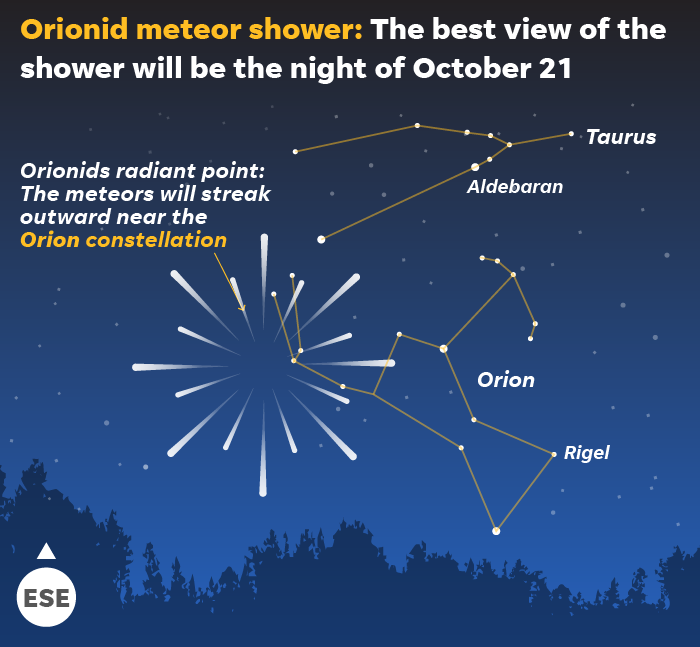The Orionid meteor shower is coming Monday night
Keep your eyes to the night sky late Monday night and especially early Tuesday morning – you might get a peek at the Orionid meteor shower.
“I would rank the Orionids in the top five meteor showers of the year,” AccuWeather astronomy blogger Dave Samuhel said. ”It will be the strongest shower since the Perseids of August ... The Orionids provide 20 to 25 meteors per hour on the peak night."
Orionid meteors are debris left behind by Halley's Comet, arguably the most famous of all comets, according to Deborah Byrd of EarthSky.org. "This comet leaves debris in its wake that strikes Earth’s atmosphere most fully around Oct. 20-22, while Earth intersects the comet’s orbit, as it does every year at this time," Byrd said.

The Orionids are some of the fastest and brightest among meteor showers because the Earth is hitting the stream of particles almost head-on, according to Space.com. How fast? Most zip by at 41 miles per second, which translates to about 148,000 mph.
If the meteors originate from Halley's, why are they called the Orionids?
"Meteors in annual showers are named for the point in our sky from which they appear to radiate," according to Byrd. "The radiant point for the Orionids is in the direction of the famous constellation Orion the Hunter."
To view the shower, try to avoid light pollution and don't use binoculars or telescopes, Weather.com said. Though the meteors will emanate from the eastern horizon, they will streak across the entire sky and will be visible from anywhere on Earth, according to NASA.
The best time to view the shower is after midnight, when the constellation Orion rises high above the horizon. "If you can spot Orion, then get ready for some meteors," Samuhel said.
Unfortunately, the moon will be a bit of an issue this year as it will rise just after midnight on the peak night and will be around 50% illuminated, AccuWeather said.
Clouds could also cause problems for viewing the shower in the eastern and northwestern U.S., AccuWeather said, noting the best views should be in the central and southwestern parts of the country.
If you miss this shower, you can still catch the Leonids in November and the Geminds in December.

This article originally appeared on USA TODAY: Orionid meteor shower: Coming to a sky near you Monday night

